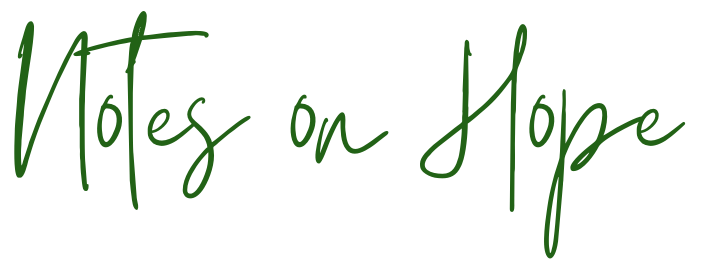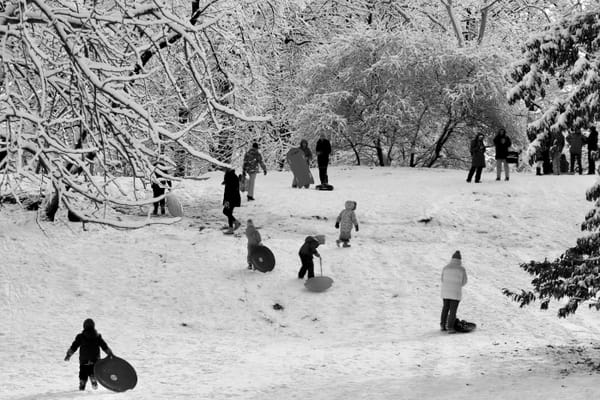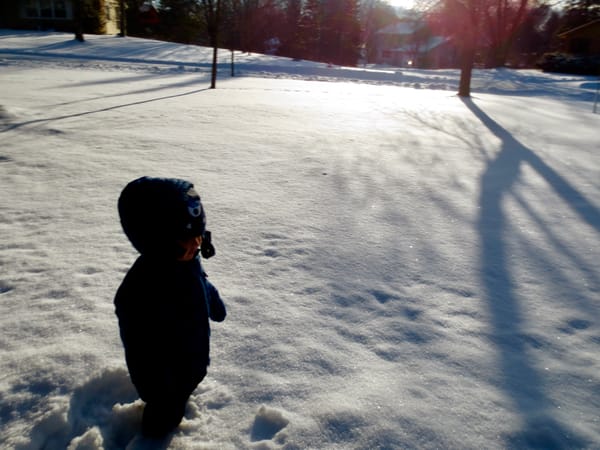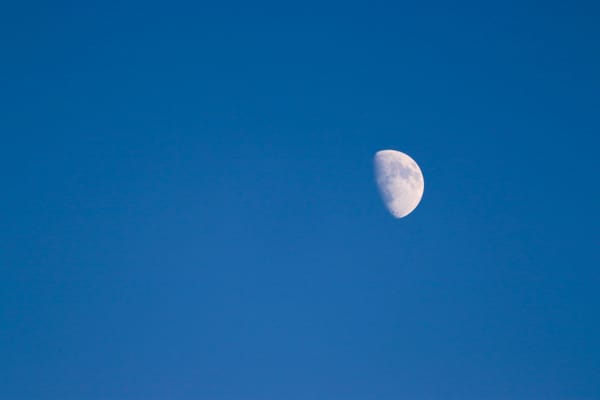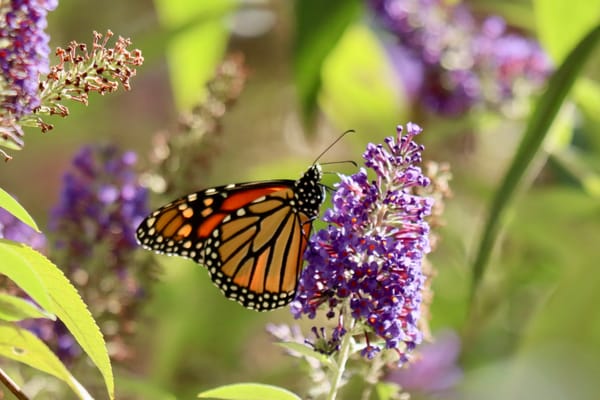How We Endure
Lessons from the depths
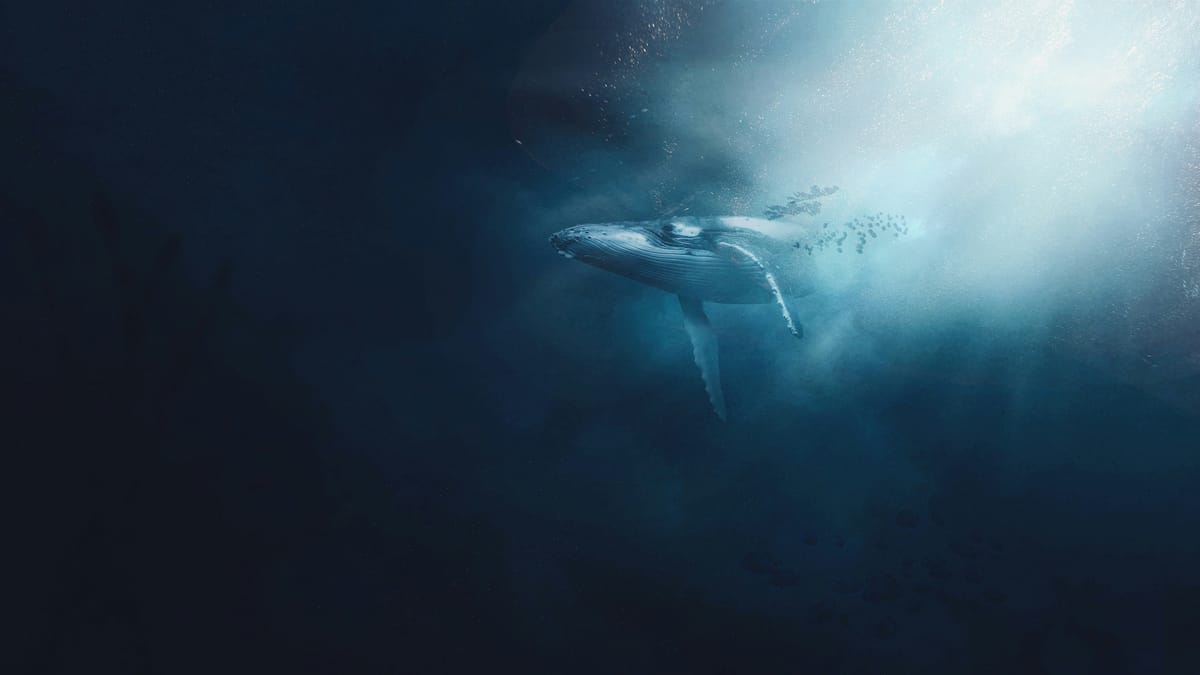
“Listen. It is not too late
to wake it. Say the names
of the wild, the forgotten things:
bluebird, red wolf, robin; violet, child, clover.
You cannot save the world but you can open
the window for the trapped wren in the cellar.
Read a book to a blind man, to your father.
Tell a child you do believe her anger.
Make your life the first life that you save.”
~Joseph Fasano
“Instructions for Having a Soul”
I’ve been thinking recently about whales and astronauts and butterflies and all the work that goes into enduring, even when the scale of uncertainty feels oppressive. The most profound changes are often difficult to see as they are happening, and this can create an illusion that lulls us into equating waiting with wisdom. When all of our options feel frightening or lonely, it is especially tempting to understand endurance as simply holding out until the storm passes, rather than locating the courage to venture into the unknown. We may wish for a way to arrive at a transformed reality through stillness and quiet faith. But, when we look closely, even the most unexpected transformations are rarely as quiet or as sudden as they seem.
Let’s start with the whales. I read an article last spring about the possibility that blue whales may be recovering their population numbers in Antarctica. If the trend persists, this would be striking good news, particularly at a time when we are abandoning the natural world in so many ways. It always feels somewhat miraculous when a species makes a resurgence from the edge of oblivion. These moments provide tangible evidence that it is possible to shift powerful trajectories, that nothing is inevitable, and that we can pull ourselves back from the brink, even when it seems we are clinging to the edge of a cliff. Such evidence is essential to hope. These data points are proof of possibility. They are the candles in the dark that keep us moving forward, even when we cannot see clearly where we are headed. But, particularly when a shift toward or away from hope comes unexpectedly, it is also easy to mistake it for a sudden turn of fate, and this can be dangerously paralyzing, even when the news is good. While we cannot control every variable, and sometimes unanticipated events do contribute to tipping the scales in surprising ways, viewing these moments as though they have materialized out of the ether of fortune or providence can make us blind to the ongoing effort and incremental change that usually leads up to visible transformation.
The liminal spaces that are shaped by uncertainty, when change is underway but not yet achieved, often appear to be periods of either dormancy or chaos. But, when we look more closely, we usually see that the time before a seemingly dramatic transformation is almost always filled with active, if imperceptible, perseverance. Change rarely occurs all at once or materializes out of patience alone. But it does often manifest in ways that create an illusion of sudden transmogrification, over which we feel we have little control. The whales remind us of a different reality.
Researchers were alerted to the increase in the whale population by careful tracking of their song. The headline of the article quoted the senior research scientist, Brian Miller, who, in describing the whales’ calls, said, “We think the message is: ‘I’m a blue whale, I’m here.’”
On a very basic level, it makes sense that a migratory species would call out in this way, seeking a response from others of their kind to ensure they are on course. But, as Miller pointed out, there’s also a persistence and a poetry to their calls, given the precariousness of their mere existence and our role in their fragility. We humans listen intently to the somber melodies of their song, as they announce their continued presence, despite our having brought them to the brink of extinction. They continue to seek the reassuring echo of their own kind in the expanse of waves, and we eavesdrop on their journeys and find an echo of our own deepest hope in their calls. We find ourselves reflected in their longing and in their insistence, as we go about our days in a hostile world and also do our best to say, “Yes, I am still here, I haven’t given up,” and to reach out for others who can reassure us of this fact.
In this reflection, it is apparent that endurance requires constant forward motion and constant calling out for one another. As small as we may feel, even the largest animal in the world moves through the vastness of the ocean singing to the expanse of all that is unknown, “I’m here, I’m here, I’m here, I’m here, I’m here,” like a stubborn heartbeat, unrelenting in the dark.
We can’t afford to only take comfort in these moments of recognition, though. Their voices calling out are reminders, not only that we aren’t alone, but also that it takes active effort to persist and continue to call out, even when no answer comes. And the recent resurgence of their calls is a reminder of how vital the voice that calls back is when it finally arrives. The purpose of the whale’s call, after all, is to locate others and to be assured that, even when you seem most isolated, another heartbeat calling back is possible. We have a responsibility, not only to continue to press forward, but also to listen and respond when we hear another voice, no matter how faint. This is not the passive work of simply waiting for what comes next. It is an insistence on constant movement, even when there is no clear destination, and on listening intently for others calling out to us. And it is the work of mustering the courage to respond.

A more human reminder of the work that uncertainty asks of us can be found in the two American astronauts, who have been living on the International Space Station for much longer than initially anticipated. They have been articulating a similar message of persistence and commitment, as they’ve tried to convey a deeper understanding of what it means to work through uncertainty than the public narrative has readily captured. While they’ve been painted by the media and politicians as though they are desperately awaiting rescue, they have explicitly said that this is not how they view their own situation, because their work is inherently filled with uncertainty. They do not see themselves as passive or as having been abandoned, but rather as steadily and persistently doing exactly what their job and their mission require.
One of the two astronauts, Butch Wilmore, said recently, “We don’t feel abandoned, we don’t feel stuck, we don’t feel stranded.” Instead, he explained, they are “prepared and committed.” This is a mistake we often make when confronted with uncertainty. We believe we are witness to quiet waiting or even desperation when what we are actually seeing is tremendous effort and dedication.
I wonder what we potentially sacrifice when we fall into this error in our perceptions. After all, if we cannot recognize quiet, determined, incremental work and engage in similar efforts ourselves, how will we find our way to one another? How will we respond to someone calling out through the dark waves or the vastness of space or simply through the murky air between us and another person within our reach, if we don’t know how to swim through the unknown ourselves, or keep working when the destination becomes unclear.
When I was still teaching in the classroom, I would talk with the children each spring, as they watched with baited anticipation for butterflies to emerge from their quiet chrysalides, about how much was happening within these small enclosures. Children are often given the impression that this is a period of inactivity or sleep in the caterpillar’s otherwise very visible progress toward transformation. In fact, the opposite is true. The caterpillar is going through a process in which nearly every cell is repurposed and transformed, and one which actually begins weeks earlier, under the skin of the caterpillar, as the very beginnings of wings start to form at the cellular level, invisible to our watchful eye.
It was always important to me that the children begin to understand that sometimes the hardest work is the most difficult to see. Though the caterpillar’s dramatic change appears sudden, as they emerge wet-winged and wholly transformed, it is actually one of gradual, constant cellular effort. Knowing this not only shifts our understanding of butterflies, it shifts our understanding of the very process of change and the possibility of our own effort, both individually and in our capacity to impact the world around us.
We are in a period of metamorphosis, though our trajectory is less certain than that of the caterpillar or even of the whales and the astronauts. From our own intimate lives to the national and global landscape, it is hard to decipher where we are headed. The destinations of historical change don’t reveal themselves in advance. But I think we can still learn from the steady persistence of nature and the dedicated courage of the astronauts, who do not simply await their destiny but, each in their own way, continuously persist in the work of moving forward, changing, singing, and seeking.
The poet Nikita Gill has written:
“Hope sits in the trenches,
the last one standing,
its teeth cracked,
its knuckles bruised,
its body broken;
but its eyes are still gleaming
with the light of a million lamps.
Its heart is still beating
because even here,
even now,
it knows that a better world
is worth fighting for.”
Hope does not ask us to whisper, “this too shall pass,” to ourselves again and again, like some alternate rosary of submission that requires us to squeeze our eyes shut. Hope asks us to commit a different refrain to our hearts and our lips—one of, “I’m here, I’m here, I’m here, I’m here, I’m here”—one that refuses to hide or wait passively, but instead keeps moving, keeps calling out, and keeps listening for others calling back. Hope requires that we remain “prepared and committed” to work toward something better, even if we have to say it over and over until we believe it.
Hope lives in uncertainty, precisely because uncertainty necessitates moving forward blind to everything but hope, fighting to hold onto our belief in the possibility of something better. This work of creating a better world is bruising at times. But it is in continuing to call out, in listening for the calls of others, and in responding when we hear them, however far away, that we find each other and remember what we are fighting for.
Wishing you steady persistence,
Alicia
A few resources I found helpful & hopeful this week…
Reading Among Ruins: Help Rohan, a 13 year old in LA who lost his own home to the wildfires, help other kids rebuild their home libraries. Escaping into a book is especially important to children recovering from trauma. And kids like Rohan need to see that their dreams of making the world better can come true, so they keep trying. Let’s help him make it happen!
People are starting to show up: “Make them outlaw you. We will stand behind you. We will be there with you. I will get arrested with you.”
I Still Choose Hope: “As long as we can save even the smallest slice of this mind-blowingly beautiful planet, and of our flawed but still miraculous civilization, that means going on will be worth more than giving up.”
If you think someone else in your life might need some hope, please share. It’s always easier to hold onto hope when we’re not doing it alone.
